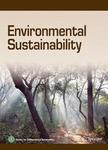版权所有:内蒙古大学图书馆 技术提供:维普资讯• 智图
内蒙古自治区呼和浩特市赛罕区大学西街235号 邮编: 010021

作者机构:Department of Environmental Science School for Environmental Sciences Babasaheb Bhimrao Ambedkar University (A Central University) Lucknow India Department of Polymer and Process Engineering Indian Institute of Technology (I.I.T.) Roorkee IIT Roorkee Campus Saharanpur India Paper Testing Division Central Pulp and Paper Research Institute Saharanpur Saharanpur India
出 版 物:《Environmental Sustainability》
年 卷 期:2018年第1卷第3期
页 面:233-244页
摘 要:The de-inking ability of the crude laccase (benzenediol: oxygen oxidoreductase, EC 1.10.3.2) produced by a white rot fungus Peniophora sp. (NFCCI-2131) was tested using mixed office waste paper. In addition, the impact on physical and optical properties of the de-inked pulp, and the chemical load of the effluent generated during laccase based de-inking process was also analyzed. In the present study, 2.5 U/ml laccase was produced by the fungus under submerged culture conditions. Laccase (10 U/g of air dried pulp) was found to improve the tensile strength of recycled pulp by 1.7-fold, de-inking efficiency by 1.5-fold, opacity by 3.84%, and brightness by 5.83%. Scanning electron microscopy analysis revealed less rupturing of cellulose fibers and increased detachment of ink particles from the surface of the fibers in comparison to chemical de-inking. Fourier-transform infrared spectroscopy analysis of laccase treated pulp revealed degradation of the guaiacyl group and a high degree of deformation in methyl group of lignin. The biochemical and chemical oxygen demand (BOD and COD) were found to be reduced by 52 and 36% respectively, in the effluent generated after crude laccase based de-inking of mixed office waste.